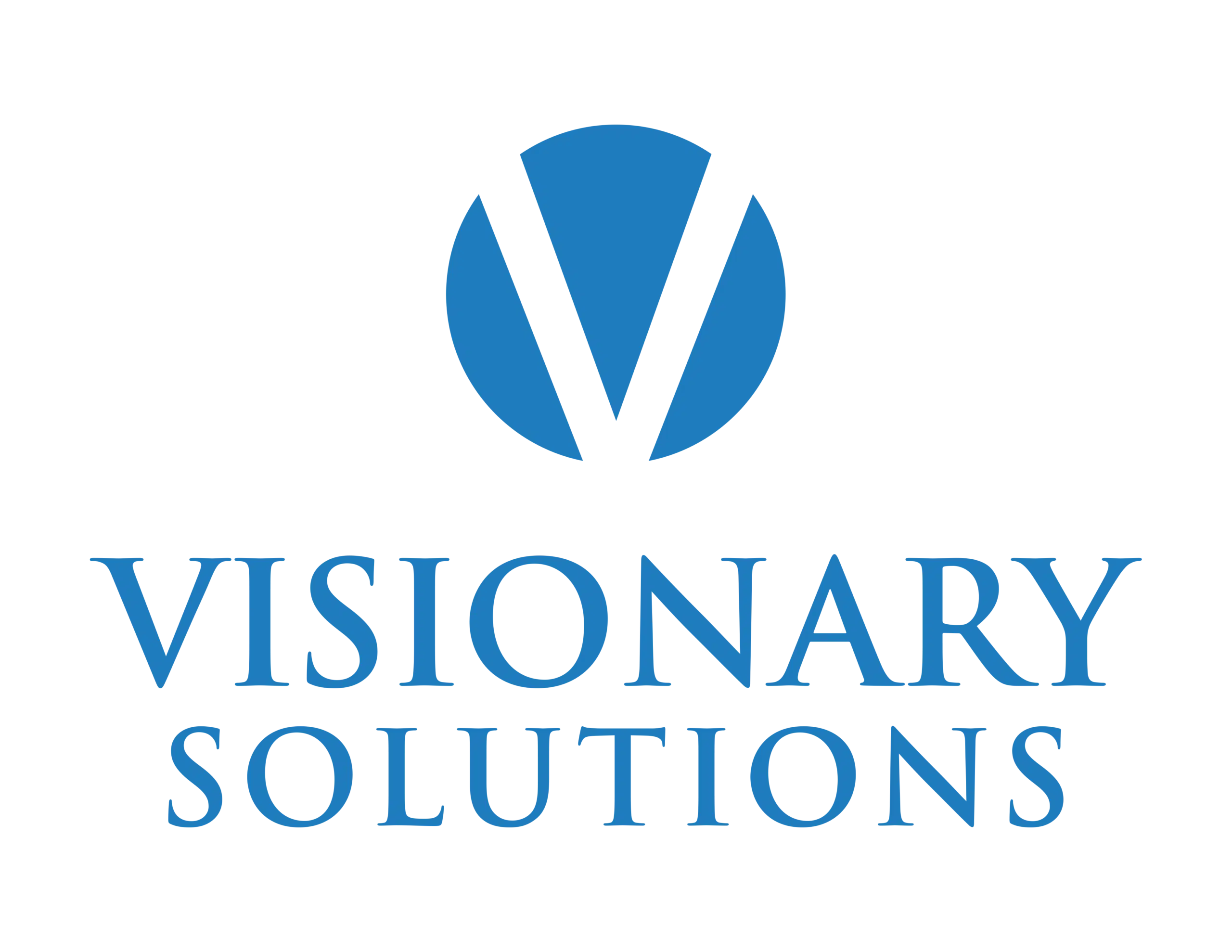Personal Injury Marketing has undergone a remarkable transformation in the digital world, reshaping the landscape of legal advertising and client acquisition.
In the not-so-distant past, lawyers heavily relied on traditional marketing methods like billboards, print ads, and TV commercials to reach potential clients. While these certainly had their place, they were often costly, lacked precision in targeting, and had limited metrics for tracking their effectiveness.
However, with the advent of the online age, the industry has witnessed a seismic shift in marketing strategies. The rise of the internet and the proliferation of digital devices have given birth to a new era of possibilities.
Professionals now have a vast array of online tools and tactics at their disposal to connect with their target audience more effectively, establish their brand, and ultimately drive growth.
In this guide, we will delve into the strategies and tactics that are proving to be game-changers in the realm of personal injury marketing.
Whether you’re a seasoned attorney looking to revamp your marketing efforts or a newcomer to the field seeking to establish a strong online presence, this article will equip you with the knowledge and insights you need to thrive!
Navigating the Challenges and Costs of Personal Injury Attorney Marketing
Marketing for personal injury attorneys presents a unique set of challenges and costs that require a comprehensive understanding to achieve success in a highly competitive field.
To effectively navigate this terrain, it’s crucial to delve deep into the nuances, pitfalls, and monetary aspects of attorney marketing, while also comparing traditional versus modern challenges.
Traditionally, personal injury attorneys faced a limited range of marketing challenges, primarily centered on building a local reputation through word-of-mouth referrals and networking within their legal community.
These professionals relied heavily on their professional network and the trust of their clients to generate new cases.
However, even in this classic landscape, there were significant costs involved.
Attorneys often had to invest substantial time and effort in networking events, establishing relationships with medical professionals, and maintaining a physical office presence—all of which incurred both time and financial spending.
In the digital age, personal injury attorney marketing has expanded far beyond past methods.
While word-of-mouth referrals remain valuable, they are no longer the sole driving force behind client acquisition. The internet has transformed the legal landscape, introducing many modern challenges.
Online competition is fierce, with countless attorneys vying for the attention of potential clients. This has driven up the costs associated with online advertising, search engine optimization (SEO), and pay-per-click (PPC) campaigns.
To stand out in this crowd, attorneys often find themselves investing significantly in online marketing strategies.
Moreover, the legal industry’s stringent regulations and ethical considerations add another layer of complexity.
Professionals must carefully navigate these rules while promoting their services, which can be particularly challenging in the online realm.
When comparing traditional versus modern marketing costs, it’s evident that new strategies often require more substantial financial investments.
Traditional methods, while still relevant, are no longer sufficient on their own.
However, it’s crucial to recognize that investing in modern marketing can yield substantial returns.
A well-executed online campaign can reach a broader audience, generate a consistent flow of leads, and enhance a firm’s reputation.
The potential for growth and increased caseloads often justifies the higher costs associated with it.
Exploring the Multi-Faceted Nature of Personal Injury Law Firm Marketing
Personal injury law firm marketing is a complex endeavor that draws from a diverse range of strategies to achieve success.
To truly understand and harness its potential, it’s essential to explore the intricate web of marketing elements that come together in this field.
At its core, personal injury law firm marketing revolves around two fundamental pillars: online and offline strategies.
Online efforts encompass the digital landscape, including the firm’s website, social media presence, search engine optimization (SEO), and online advertising.
Offline strategies, on the other hand, involve traditional marketing channels like print media, radio, television, and even community engagement.
However, the heart of successful personal injury marketing lies in the ability to integrate these approaches seamlessly.
Your firm’s website, for instance, should serve as the central hub where online and offline strategies converge. It should not only be a showcase of your expertise but also a platform that bridges the digital and physical worlds.
For example, you can use your website to share informative content like blog posts on recent legal developments, case studies, and client testimonials. These materials can then be repurposed for offline use in brochures, seminars, or even radio ads.
Moreover, social media plays a pivotal role in creating a cohesive marketing mix. It serves as a dynamic link between your online and offline efforts.
Your law firm’s social media presence can promote community events and workshops, share video testimonials from satisfied clients, and even amplify the reach of your offline advertising campaigns.
The power of content cannot be underestimated in this type of marketing. High-quality content not only establishes your authority and expertise but also nurtures trust among potential clients.
Articles, videos, infographics, and podcasts can all be part of your content arsenal. What’s crucial is maintaining a consistent message and tone across all mediums, both online and offline.
The concept of branding is another key aspect of marketing for personal injury lawyers.
A strong and recognizable brand not only sets you apart from competitors but also fosters a sense of trust and reliability among clients.
Your brand should be reflected consistently in all marketing materials, from your website’s design and color scheme to the tone of your radio advertisements.
Additionally, personalization is increasingly important in today’s landscape. Tailoring your approach to the specific needs and preferences of your target audience can significantly enhance your success.
Online tools like email marketing and retargeting ads allow you to customize your messages based on user behavior. Offline, hosting personalized workshops, or offering free consultations can forge a deeper connection with these potential clients.
Lastly, measuring and analyzing the effectiveness of your marketing efforts is paramount.
The digital realm offers an array of analytics tools that can provide insights into website traffic, social media engagement, and the success of online advertising campaigns. For offline strategies, tracking the response rates to radio or print ads can help you refine your approach.
By continuously evaluating your marketing mix’s performance, you can adapt and optimize your strategies for ongoing growth.
Personal Injury Marketing Strategy
In the ever-evolving landscape of personal injury marketing, a cohesive and adaptive strategy is paramount.
It’s not merely about reaching potential clients but also about establishing trust and credibility in a competitive field.
To thrive, attorneys must craft a strategy that effectively leverages websites, Google My Business, legal directories, and social media to connect with clients and showcase their expertise.
The Role of Websites in Personal Injury Lawyer Marketing
At the heart of any successful personal injury marketing strategy lies a user-friendly, informative website.
This is your digital storefront, the first impression for potential clients.
It’s not just about aesthetics; it’s about conveying trust, professionalism, and accessibility.
Design
Your website’s design should be clean, modern, and responsive.
Mobile-friendliness is a must, as many users access them on smartphones.
Clear, high-quality images and intuitive navigation are also vital. A cluttered or outdated website can deter potential clients.
Usability
User experience (UX) is very important as well.
Visitors should easily find information about your services, attorneys, and contact details.
Forms for consultations or inquiries should be straightforward, and response times should be swift.
Content Relevance
Content is king in the digital realm.
Your website should offer valuable, informative content that addresses common questions and concerns related to personal injury claims.
Blogs, articles, and frequently asked questions (FAQs) sections can establish your firm as an authoritative source of legal information.
Leveraging Google My Business in Personal Injury Attorney Marketing
In the modern digital age, Google My Business (GMB) has become a powerful tool for personal injury lawyers.
A well-optimized GMB profile can significantly enhance your visibility and credibility.
Reviews
Encourage satisfied clients to leave reviews on your GMB profile.
Positive feedback can sway potential clients, showcasing your firm’s competence and reliability.
Responding promptly and professionally to reviews, whether positive or negative, demonstrates your commitment to client satisfaction.
Location Services
GMB allows you to specify your firm’s location, making it easier for local clients to find you.
For personal injury lawyers, who often serve specific geographic areas, this feature is invaluable.
Make sure your address, phone number, and office hours are accurate.
Regular Updating
Keep your GMB profile up to date.
If your office moves, your contact details change or your hours fluctuate, update your page promptly.
An outdated profile can often lead to confusion and lost opportunities.
Navigating Legal Directories for Maximum Impact in Personal Injury Marketing
Legal directories have their pros and cons in personal injury marketing.
They vary in reputation and reach, so it’s crucial to choose wisely.
The Pros
Being listed in reputable legal directories can boost your online presence and credibility.
Potential clients often turn to these sources to find legal representation. This way, being present increases your visibility.
The Cons
Not all legal directories are created equal. Some may have a limited reach or a poor reputation.
Additionally, over-reliance at the expense of other marketing efforts can be a mistake.
It’s essential to assess the value and relevance of each directory for your specific practice.
Engaging With Clients Through Social Media in Marketing for Personal Injury Lawyers
Social media platforms have evolved into essential tools for personal injury lawyers to engage with clients and the broader community.
Establishing a Rapport
Social media allows you to humanize your law firm.
Share insights into your team, your values, and your commitment to your clients.
Showcasing the faces behind the legal expertise can help potential cases feel more comfortable reaching out.
Sharing Testimonials
Satisfied clients are often willing to share their experiences on social media. Encourage them to do so.
Positive testimonials on platforms like Facebook or LinkedIn can significantly impact potential perceptions of your firm.
Showcasing Success Stories
Share success stories (with client consent) to demonstrate your track record of achieving favorable outcomes.
These stories provide concrete examples of your competence and dedication.
In conclusion, a robust personal injury marketing strategy encompasses various facets, each playing a unique role in attracting and retaining clients.
A user-friendly, informative website serves as the digital face of your firm.
Google My Business enhances your online presence and credibility, while legal directories can extend your reach.
Social media platforms offer opportunities to establish rapport, share testimonials, and showcase your success stories.
By embracing these elements, personal injury lawyers can navigate the digital landscape effectively, ultimately fostering growth and success in their practice.
Power of Paid Digital Strategies in Personal Injury Law Firm Marketing Plan
In the ever-evolving landscape of personal injury law firm marketing, the power of paid digital strategies stands out as a dynamic and indispensable component of any successful marketing plan.
While organic efforts certainly hold their own merit, integrating paid digital strategies is paramount to ensure maximum visibility, engagement, and growth in a highly competitive field
Introduction to Google Ads for Personal Injury Marketing
At the forefront of paid digital strategies is the versatile world of Pay-Per-Click (PPC) advertising, commonly exemplified through platforms like Google Ads.
It operates on a straightforward principle: advertisers pay a fee each time their ad is clicked.
This means that instead of relying solely on organic search results, law firms can bid on relevant keywords to have their ads displayed prominently on search engine results pages (SERPs).
For personal injury attorneys, this offers a direct avenue to connect with potential clients actively seeking legal assistance.
By carefully selecting keywords pertinent to their practice areas, such as “car accident lawyer” or “personal injury attorney,” firms can ensure that their advertisements are presented to individuals with immediate legal needs.
This not only boosts visibility but also streamlines the path for potential clients to reach out for legal counsel.
Exploring Different Ad Formats on Google Search
Within the realm of Google Ads, there exists a spectrum of ad formats, each tailored to specific marketing objectives and audience preferences.
Text ads, the most traditional and recognizable format, are concise yet effective in conveying essential information. These often appear at the top of SERPs, providing an immediate opportunity to capture the attention of users in need of legal guidance.
Beyond text ads, display ads offer a visually engaging approach, showcasing compelling graphics and messages across the Google Display Network.
This includes millions of websites, allowing personal injury law firms to extend their reach far beyond the confines of search results.
Additionally, video ads can provide a dynamic means of storytelling and connection, particularly for firms looking to convey empathetic narratives that resonate with potential clients.
By strategically incorporating these various ad formats, professionals can cater to diverse user preferences, ensuring that their message is delivered effectively and memorably.
Harnessing Social Media for Injury Lawyer Advertising
In the contemporary landscape of digital marketing, social media platforms like Facebook and Instagram have emerged as influential channels for paid advertising.
Personal injury law firms can harness the potential of these platforms to execute highly targeted and impactful ad campaigns.
Social media advertising enables them to define their audience with remarkable precision, considering factors such as demographics, interests, and behaviors.
This level of specificity ensures that ads are presented to individuals most likely to require legal assistance following an injury or accident.
Furthermore, the visual nature of platforms like Instagram presents an opportunity for law firms to convey empathy and trustworthiness through compelling imagery and narratives.
For example, sharing success stories or educational content can humanize the firm and establish a sense of authority in the field.
By engaging in paid social campaigns, companies can foster meaningful connections with potential clients and nurture relationships that may eventually lead to legal representation.
Educating and Creating Awareness: A Two-Pronged Approach
While the goal of paid digital strategies in a personal injury law firm marketing plan is undoubtedly to attract potential clients, it is equally vital to adopt a two-pronged approach that focuses on educating the audience and building awareness for the firm.
Educational content, such as blog posts, articles, or videos, serves a dual purpose:
Firstly, it provides valuable information to individuals navigating the complexities of personal injury claims, establishing the law firm as a credible source of knowledge.
Secondly, it demonstrates its commitment to its clients’ well-being, creating a sense of trust and reliability.
By addressing common questions and concerns related to personal injury cases, attorneys can empower potential clients to make informed decisions about seeking legal representation.
Simultaneously, creating awareness about the firm’s services and unique value proposition is essential.
Paid digital strategies can be leveraged to amplify the reach of awareness-building campaigns. Whether through Google Ads or social media advertising, professionals can strategically position themselves in front of their target audience, introducing their brand and the exceptional services they offer.
This combination of education and awareness ensures that when individuals require legal counsel for a personal injury matter, the law firm is not only top of mind but also perceived as the go-to authority in the field.
All in all, personal injury law firms must recognize the undeniable power of paid digital strategies in their marketing plans.
The integration of paid digital efforts alongside organic initiatives ensures that they can maximize visibility, engagement, and ultimately, growth.
Through Google Ads, they can directly connect with individuals seeking legal assistance, while the diversity of ad formats ensures that their message is communicated effectively.
Social media platforms provide an opportunity to forge meaningful connections and establish trust with potential clients.
A two-pronged approach, involving education and awareness-building, reinforces the firm’s position as a trusted authority in the field.
As the digital landscape continues to evolve, attorneys who embrace the potential of these strategies are better poised to thrive and expand their reach in an increasingly competitive market.
Leveraging SEO for Maximum Online Visibility in Personal Injury Marketing
One foundational strategy stands tall as the linchpin of online success: Search Engine Optimization, or SEO.
In today’s digital age, where potential clients turn to search engines like Google for answers to their legal concerns, mastering the art of SEO is not just an option; it’s a necessity.
Imagine SEO as the guiding force that directs a spotlight onto your personal injury law practice amid the vast online world.
It’s the mechanism that ensures your website not only appears in results but also ranks high enough to capture the attention of those seeking legal assistance.
In essence, this is your beacon in the digital darkness, guiding potential clients to your doorstep.
Technical SEO: The Backbone of Your Online Strategy
At the core of SEO lies technical optimization, the unsung hero of your online presence.
It encompasses crucial elements like site speed, mobile-friendliness, and site structure.
Your website’s speed isn’t just about user experience; it’s a ranking factor in Google’s algorithm. A slow website can discourage visitors and push you down the search results.
Similarly, in an age where mobile devices dominate internet usage, ensuring your website is mobile-friendly is paramount.
Consider its structure as the blueprint. A well-organized site makes navigation easier for both visitors and search engines, improving user experience and search rankings simultaneously.
By focusing on technical SEO, you lay a solid foundation for your personal injury lawyer marketing efforts.
Local SEO: Connecting with the Local Audience
For personal injury attorneys, much of your client base is likely to come from your local area.
This is where local SEO steps into the limelight. It’s all about connecting with your immediate community and becoming the go-to legal expert for residents facing personal injury issues.
Geo-targeted content is the keystone of local SEO.
Tailoring your website content to address local concerns, laws, and events not only makes you more relevant to closeby searchers but also demonstrates your expertise in their specific legal landscape.
Local backlinks—links from other local businesses or organizations—and listings on platforms like Google My Business further solidify this presence.
On-Page SEO: Optimizing Content for Search
The heart of SEO beats within your website’s content. It’s not just about what you say but how you say it that matters.
Keyword optimization, meta tags, and high-quality content are the pillars of on-page SEO.
Keyword optimization involves strategically incorporating relevant phrases into your content. These are the terms your potential clients are typing into search engines. By aligning your content with them, you increase your chances of ranking for relevant searches.
Meta tags provide a sneak peek of your content to search engine users. Crafting compelling meta titles and descriptions not only entices clicks but also informs algorithms about your content’s relevance.
However, it’s not enough to stuff keywords into your content or meta tags; quality matters.
Google’s algorithms are highly sophisticated and prioritize content that provides value to users.
Your content should answer questions, solve problems, and demonstrate your expertise.
Quality content not only attracts visitors but also encourages them to stay, explore, and ultimately contact your firm for legal assistance.
Off-Page SEO: Building Trust and Authority
Off-page SEO takes you beyond the confines of your website. It’s about building trust and authority in the digital realm.
Backlinks, guest posts, and reputable citations are the tools of the trade here:
Backlinks, or links from other websites to yours, are like votes of confidence from the digital community.
Quality backlinks from authoritative websites can significantly boost your search rankings. However, the key is quality over quantity. One high-quality backlink can carry more weight than several low-quality ones.
Guest posts are an excellent way to showcase your expertise. By contributing well-researched and informative articles to authoritative websites in the legal or personal injury niche, you not only establish yourself as an authority but also earn valuable backlinks.
Reputable citations, mentions of your law firm’s name, address, and phone number on other websites, are crucial for local SEO.
Consistency is key here; your information should match across all platforms.
In the realm of personal injury attorney marketing, SEO is your compass, guiding you through the digital wilderness.
By mastering the technical aspects, connecting with your local audience, optimizing your on-page content, and building trust through off-page strategies, you’ll not only enhance your online visibility but also position your practice for growth in the competitive world of personal injury law.
Content: The Heartbeat of Your Marketing Efforts
In the realm of personal injury marketing, content reigns supreme. It serves as the lifeblood, the very heartbeat of your strategy.
It’s not merely words on a webpage; it’s the voice of your firm, the bridge that connects you with potential clients, and the cornerstone upon which you establish your expertise.
Sharing Expertise: The Power of Content in Marketing for Personal Injury Lawyers
When it comes to personal injury marketing, showcasing your expertise is the name of the game.
Blog posts, articles, and case studies are your weapons of choice in this endeavor.
Blog posts, often updated and tailored to current legal trends and issues, demonstrate your firm’s commitment to staying at the forefront of the field. They showcase your knowledge, providing valuable information to readers while subtly reminding them of your presence.
Articles take it a step further. These in-depth pieces dive deep into complex legal topics, demonstrating your firm’s mastery of the subject matter. They position you as a thought leader, someone who doesn’t just follow legal trends but shapes them.
Then there are case studies, the crown jewels of your content arsenal. These real-world examples of your legal prowess speak volumes. They tell potential clients that you don’t just talk the talk; you walk the walk.
A well-crafted case study can be the turning point for a hesitant prospect, showing them how your firm achieved justice for a client in a similar situation.
Emphasizing Local Content for Localized Impact
While the internet has global reach, personal injury cases often have a local focus. That’s where geo-specific content comes into play.
It’s about tailoring your work to target your local clientele effectively. Why? Because potential clients in your area are more likely to seek out local lawyers they can meet face-to-face.
Geo-specific content means more than just dropping the name of your city a few times in an article. It’s about addressing local legal issues, discussing recent local cases, and showcasing your firm’s involvement in the community. It’s about embedding your firm into the fabric of your locality.
When someone in your area searches for personal injury lawyers, your localized content makes you the top choice, the attorney they feel they already know, trust, and can reach out to easily.
Video Marketing: Engaging Clients Visually
The digital landscape is evolving, and so is the way we consume content.
Video marketing has emerged as a powerhouse in personal injury marketing. Videos engage clients visually and emotionally in ways that text alone can’t match.
Testimonials are a prime example. Hearing a satisfied client share their story and praise your firm’s services is far more compelling than reading a text review. It builds trust and reassures potential clients that they’re making the right choice.
Explainer videos are another valuable tool.
In personal injury cases, legal processes can be complex and intimidating. These break down processes in a clear and understandable way. They show potential clients that you’re not just knowledgeable; you’re committed to making the legal journey as accessible as possible.
Moreover, video content thrives on social media platforms, where it’s more likely to be shared and engaged with.
This is the future of content consumption, and firms that embrace it gain a significant edge!
Infographics: Visualizing Data for Easy Consumption
Sometimes, the best way to explain complex legal concepts or present compelling statistics is through visuals.
That’s where infographics come in. These visual representations of data distill information into easily digestible bites, making them perfect for the fast-paced world of online content consumption.
In personal injury marketing, they can illustrate everything from accident statistics to the legal process. They simplify complex topics, making them accessible to a broader audience. And they’re highly shareable, often going viral on social media platforms.
They not only convey information efficiently but also enhance your firm’s credibility.
They demonstrate your ability to break down complex legal matters, showing potential clients that you’re the attorney they want on their side, making the complicated seem manageable.
Promotion: Amplifying Your Content’s Reach on Social Media in Personal Injury Marketing
Creating fantastic content is just the first step; the next is getting it in front of the right eyes.
Social media is your ally in this endeavor, a powerful tool for content sharing, engagement, and boosting.
Share your blog posts, articles, videos, and infographics across your social media channels. Engage with your audience by responding to comments and messages promptly.
Use injury lawyer advertising to boost your content’s reach, targeting specific demographics, and geographic areas.
Encourage your satisfied clients to share their testimonials online, amplifying your reputation through word of mouth. Consider hosting live Q&A sessions or webinars to connect directly with them.
In the world of personal injury marketing, content is your vessel, but promotion is your wind. Harness the power of social media to carry your message far and wide, establishing your firm as a trusted authority in the field
In the end, this field is about more than just legal expertise; it’s about connecting with people, earning their trust, and guiding them through challenging times.
Content is your conduit to achieve these goals, and when harnessed effectively, it becomes the heart and soul of your firm’s growth strategy.
PR and Community Engagement in Personal Injury Law Firm Marketing
Law firms are increasingly turning to the intertwined strategies of Public Relations (PR) and community engagement to elevate their image and forge deeper connections with both existing and potential clients.
This synergy is not merely a marketing gimmick; it’s a strategic approach that can significantly boost a law firm’s reputation and trustworthiness.
Public Relations Tactics for Personal Injury Lawyers
Effective PR for personal injury law firms is a multifaceted endeavor that involves various components, each playing a pivotal role in shaping the firm’s public perception.
One of the cornerstones of PR is securing positive press coverage.
A feature in a reputable news outlet or a legal publication can significantly enhance a firm’s credibility. It demonstrates expertise and provides valuable exposure to potential clients.
Press releases are another powerful PR tool. When used strategically, they can inform the public about significant achievements, such as notable case victories, awards, or community initiatives.
These releases can also serve as a crisis management tool, enabling the firm to address and rectify any negative publicity promptly.
Building Connections: Attorney Referrals
In the legal profession, connections are invaluable. Building and nurturing relationships with other attorneys, both within and outside the personal injury niche, can be a game-changer for a law firm’s growth.
Referrals are a testament to trust and competence, and they often result from strong professional networks.
Networking is their foundation. Attending legal conferences, seminars, and bar association events not only provides opportunities to learn from peers but also to form connections.
These relationships can lead to referrals when another attorney encounters a case outside their expertise or jurisdiction.
Collaborative Marketing: Partnering with Local Media in Personal Injury Law Firm Marketing Plan
Local media outlets are integral to any community, and personal injury law firms can benefit immensely from strategic partnerships with them.
Collaborations with local newspapers, television stations, and radio shows can elevate a law firm’s reputation in the community.
Partnerships can take various forms.
Interviews with attorneys on legal matters of public interest, such as safety tips or changes in legislation, position the firm as a community leader with valuable insights.
Additionally, participating in local charity events or sponsoring community initiatives can garner positive attention.
In conclusion, PR and community engagement are not isolated components of a personal injury law firm’s marketing strategy.
They are intertwined, complementary elements that collectively contribute to the firm’s image and trustworthiness.
Positive press coverage, effective crisis management through press releases, attorney referrals built on professional relationships, and collaborative marketing with local media outlets are all strategies that can propel a personal injury law firm toward sustained growth and success in a competitive legal landscape.
By investing in these strategies, professionals not only enhance their reputation but also become integral contributors to the communities they serve, fostering trust and credibility among clients and peers alike.
Strategies and Ideas for Social Media Engagement in Personal Injury Marketing for attorneys
Social media has evolved into a powerful platform for personal injury attorneys to connect with their target audience and establish a strong online presence.
To effectively harness its potential, it’s essential to develop a well-thought-out strategy that includes content calendars, post frequency, engagement tips, and monitoring feedback.
Content Calendars
A content calendar is your roadmap for social media success. It helps you plan and organize your posts, ensuring a consistent and cohesive online presence.
Start by outlining your themes, such as informative legal tips, success stories, or client testimonials.
Assign specific topics or types of posts to each day or week, but leave room for timely or trending topics.
This balance between planned and spontaneous content keeps your feed fresh and engaging.
Post Frequency
The frequency of your posts on social media can significantly impact your reach and engagement.
Consistency is key, but quality should never be sacrificed for quantity.
Aim for a posting schedule that aligns with your audience’s activity. For most platforms, this often means 3-5 posts per week, but the exact frequency may vary based on your audience’s behavior.
Monitor engagement metrics to refine your posting schedule over time.
Engagement Tips
Building a strong online community involves more than just posting content; it’s about engaging with your audience.
Respond promptly to comments and messages, fostering conversations.
Pose questions or invite feedback to encourage interaction. Share user-generated content or client testimonials to humanize your practice.
Live streams or Q&A sessions can also be powerful tools to connect directly with your audience and address their legal concerns.
Monitoring Feedback
Social media provides a direct line of communication with your audience. So, pay close attention to feedback, both positive and negative.
Positive comments can be leveraged as social proof, showcasing your expertise and client satisfaction. Negative feedback, on the other hand, presents an opportunity for constructive engagement.
Respond professionally, offer to take the conversation offline for resolution, and demonstrate your commitment to client care.
Addressing concerns openly and empathetically can turn negative experiences into positive ones.
To maximize the impact of your digital marketing efforts, remember that authenticity and relevance are key.
Share valuable insights, legal knowledge, and success stories that resonate with your target audience.
By consistently providing value, engaging with your community, and adapting your strategy based on feedback, personal injury attorneys can effectively grow their presence and reach prospective clients seeking their expertise.
Key Takeaways and Forward Momentum in Personal Injury Marketing
Success hinges on a strategic blend of techniques and an unwavering commitment to meeting the needs of clients.
Throughout this guide, we’ve explored a plethora of strategies that can propel law firms forward on their journey to growth and prominence.
- Harness the power of digital marketing.
In an era where potential clients turn to search engines for solutions, having a strong presence is paramount.
Invest in a user-friendly website, optimize it for search engines, and regularly produce high-quality content.
Consider pay-per-click advertising to ensure your firm appears at the top of search results when individuals seek legal assistance. - Never underestimate the value of client reviews and referrals.
Word-of-mouth remains a potent force in personal injury law. Encourage satisfied clients to leave reviews on platforms like Google My Business or Avvo.
A well-placed testimonial carries substantial weight when someone is considering legal representation. - Delve into the world of social media.
Platforms like Facebook, Instagram, and LinkedIn offer unique opportunities to engage with your audience.
Share informative content, engage in conversations, and showcase your firm’s personality.
These platforms also provide targeted advertising options, allowing you to reach individuals in need of your services. - Remember the influence of community involvement.
Supporting local events, charities, or initiatives not only fosters goodwill but also elevates your firm’s visibility.
A strong community presence can make you the first choice when someone faces a personal injury legal issue. - Invest in data-driven decision-making.
Embrace analytics tools to understand what’s working and what isn’t.
Track the performance of your marketing campaigns, website traffic, and conversion rates. Use these insights to refine your strategies continually. - Foster relationships with referral sources.
Building strong connections with medical professionals, insurance agents, and other attorneys can lead to a steady stream of referrals.
Ensure you reciprocate these when the opportunity arises. - Adapt to changing times.
Keep an eye on emerging trends and technologies in the legal and marketing spheres. - Prioritize client communication.
Respond promptly to inquiries, provide updates on cases, and maintain a transparent and empathetic approach.
Satisfied clients are more likely to refer others and leave positive reviews. - Remember that consistency is key.
Effective marketing is not a one-time endeavor but an ongoing commitment.
Maintain your efforts across all channels, and over time, your brand will become synonymous with reliability and expertise. - Seek professional guidance when necessary.
The world of marketing can be intricate, and legal ethics standards are stringent.
If you’re unsure about any aspect of your strategy, consider consulting with professionals who specialize in legal marketing to ensure compliance and maximize your efforts.





